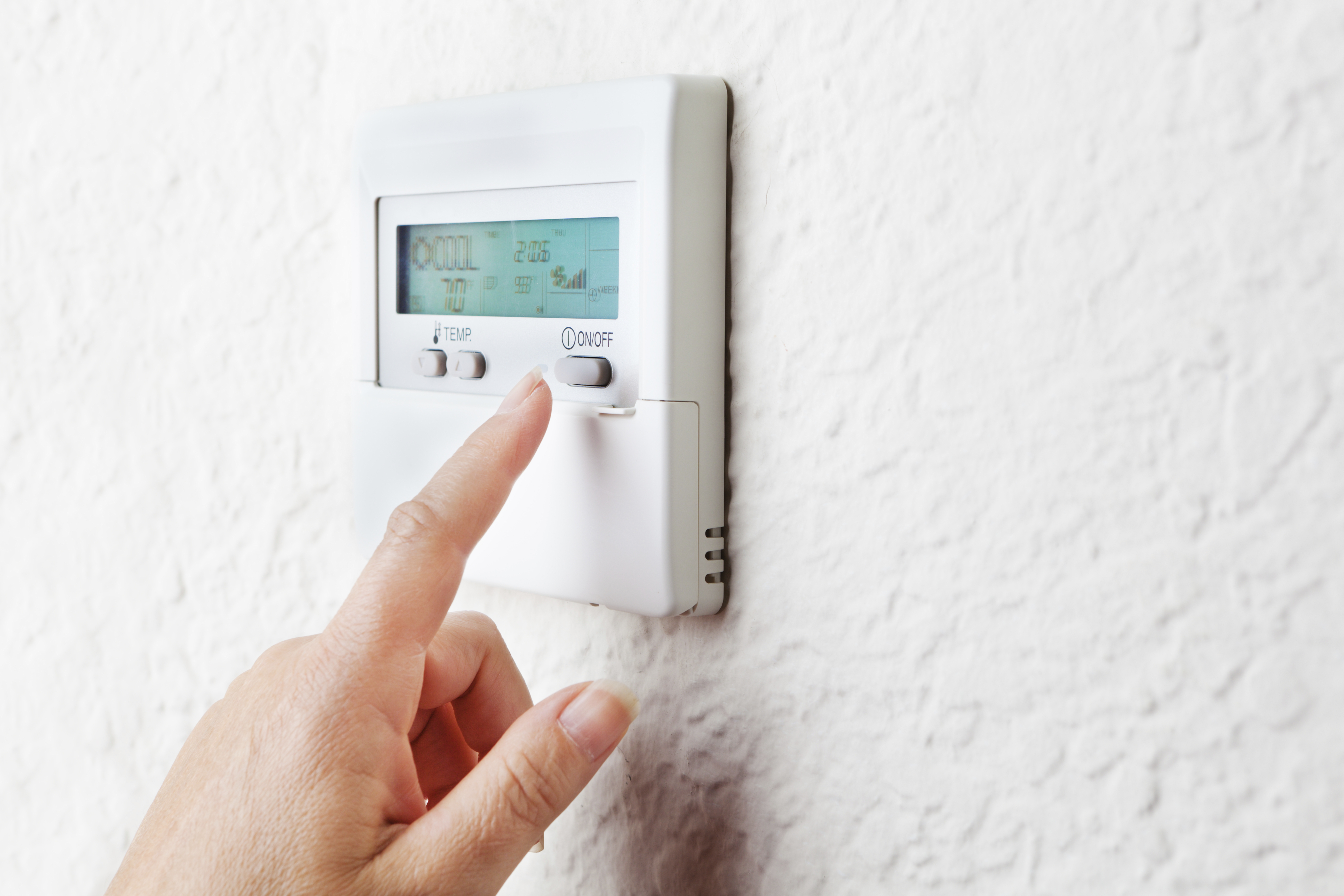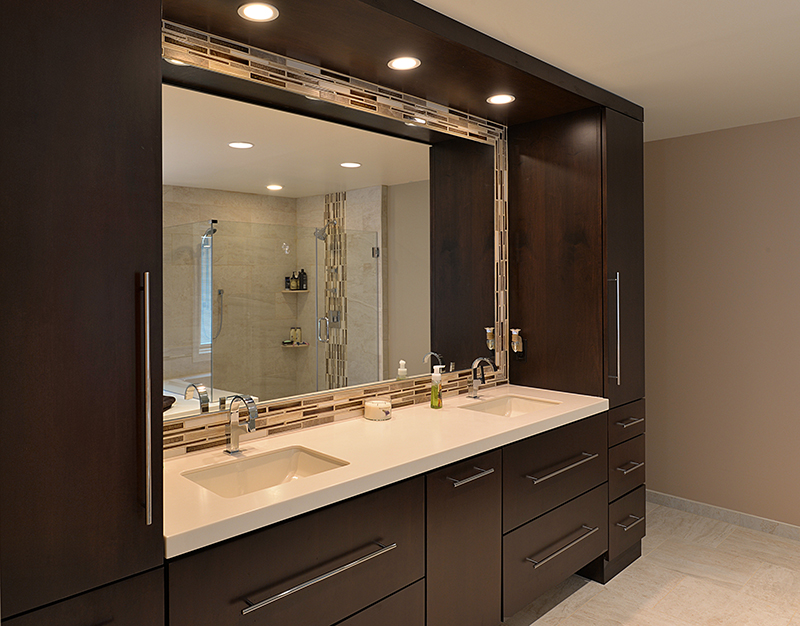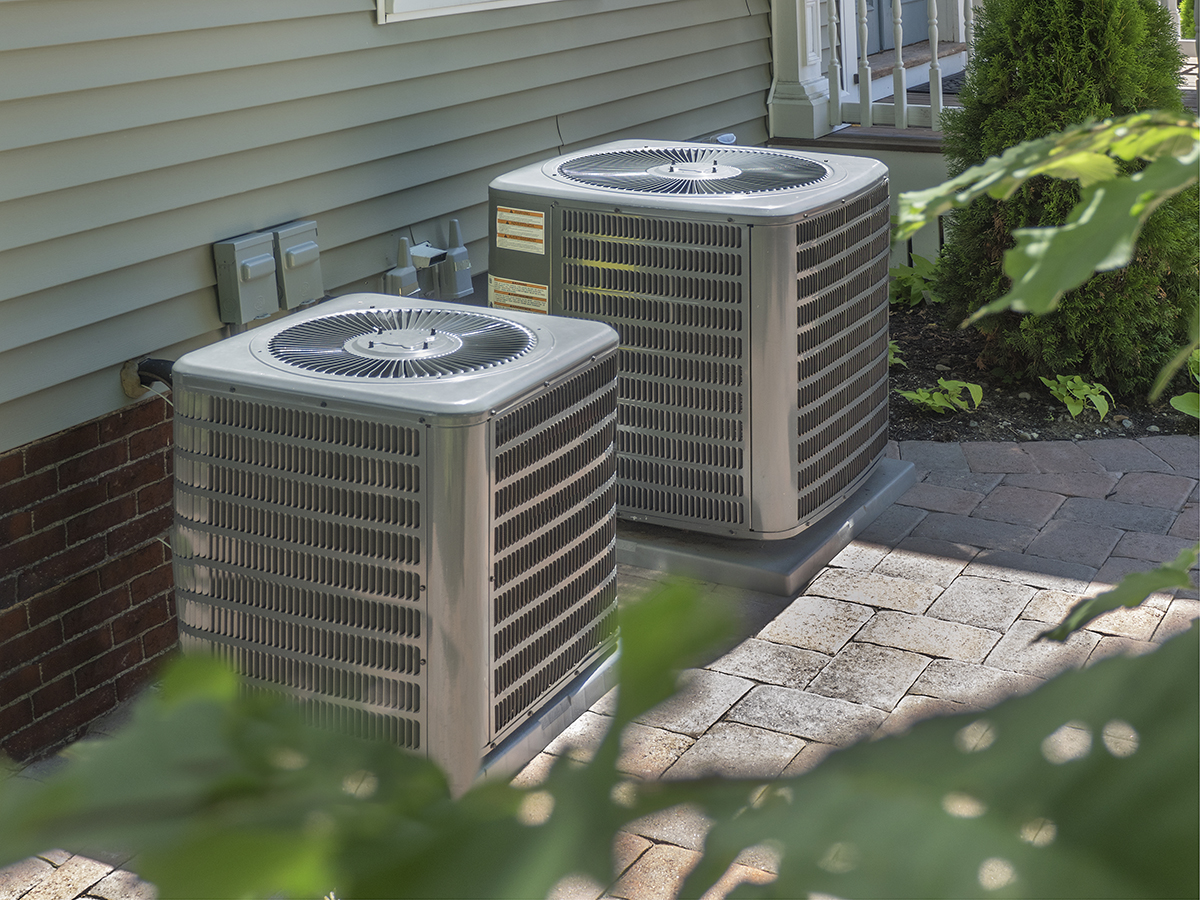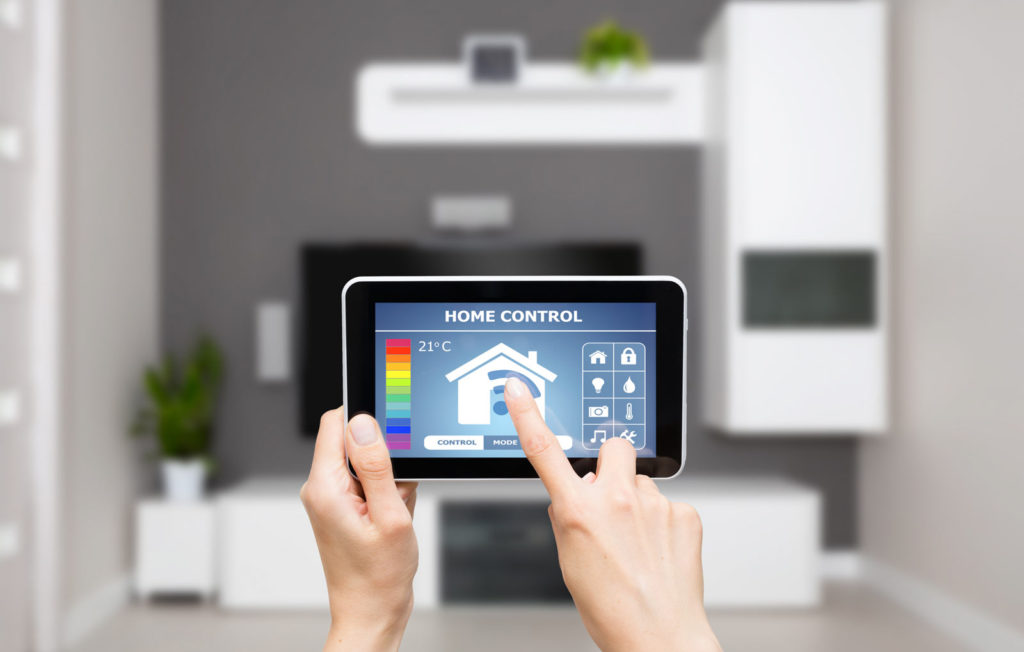Author Archives: 2010admin

How Laundry Pro™ Makes the Holidays Easy
The holidays always seem to sneak up on us. Before you know it, your home will be filled with family, friends, and chaos. ‘Tis the season of hosting relatives and having the kids home on break, after all. And while you love all the togetherness, you don’t love amount of laundry you’re stuck with. We get it, and that’s why we are happy to install the Laundry Pro™ system for our customers. If you haven’t heard about it yet, there’s no better time than right now!
What is Laundry Pro™ & How Does it Work?
Imagine the ability to do a load of wash using only cold water and 0 detergent. Say hello to Laundry Pro™! It may sound too good to be true, but it’s actually not. Using exclusive ActivePure® technology and the powerful cleaning action of water with oxygen-based oxidizers, the system creates a peroxide using only cold water. This peroxide lifts dirt, stains, and allergens from your clothing, while preventing the growth of odor-causing bacteria.
Why You’ll Love It
Laundry Pro™ is kinda hard not to love. Here’s why:
- No Detergent
By using oxygen, peroxides, and other gases to penetrate clothing fibers and lift away dirt and odors, there’s no need for additional detergents. In fact, Laundry Pro™ helps removes the build-up of old detergents from fibers to restore your clothing’s natural softness and help them last longer.
What’s that mean for cost-saving? Think about it this way: the average American family washes about 300-390 loads of laundry each year (6-7.5 loads a week) and spends $15-$25 once or twice a month on detergent. If that sounds about right to you, then you could save up to $600 a year on detergent!
- No Maintenance
Really – the system requires no cleaning or maintenance to operate at peak performance. What’s not to love about that?
- Good for Sensitive Skin
By removing those old detergents embedded in your clothing, Laundry Pro™ also protects your skin. These chemicals cause allergies which lead to redness and itching – so goodbye detergent, goodbye irritated skin!
- Brighter Whites & Colors
Clothing gets a refresh with the Laundry Pro™ system. Through the cleansing power of Oxygen without the use of harsh chemicals, you can keep clothes looking like new for longer.
- Eco-Friendly
No detergent means no detergent bottles. That’s less waste. And by using only cold water, that’s less energy too. You don’t have to be an environmentalist to appreciate that! - Easy Install
Laundry Pro™ simply connects directly to your current washing machine using standard hoses – no modifications or additional plumbing, which means no added costs.
Schedule Your Installation
From food stains from Thanksgiving dinner to grass stains from backyard football, make sure you’re prepared for everything the holidays may throw at you! The experts at Madsen are happy to tell you more about the Laundry Pro system and help get one installed for you before all the merry madness. Contact us today!

Winter is right around the corner, which means everyone will do everything they can to stay nice and warm. But one thing people tend to forget is that the warmer your air is, the drier it is too. That’s because during the heating process, your furnace strips the air of its moisture as it pumps throughout your home, causing the air to feel considerably dry.
Why is Humidity Important to your Air Quality?
One of the most important ways to maintain proper air quality is by adjusting the humidity. In the summer, we usually try to bring humidity levels down, but during the winter, humidity levels can drop way below the recommended range of 35-50%.
Overall, humidity helps keep your home and your family be more comfortable and healthier as it gets colder outside. You’re probably not willing to sacrifice warmth to keep your air less dry, so how can you maintain the right balance of both? Introducing: whole-home humidifiers.
How Does a Whole-Home Humidifier Work?
There are three types of whole-home humidifiers that can help you integrate more water into the ducts of your home’s HVAC system, keeping your air from drying out as it warms up.
- Steam Humidifiers – connects to your home’s water supply and electrical system, heating the water until it evaporates into steam before being injected into your home’s heating ducts.
- Drum Humidifiers – uses a rotating drum to wick water through a sponge, turning it into water vapor so as hot air passes through the center of the drum, moisture is introduced before spreading throughout the home.
- Flow-Through or Moisture Pad Humidifiers – only connects to your water supply with no moving parts or electricity needed. Hot air flows from your furnace to an evaporator pad where it picks up moisture and adds it to the stream of air flowing throughout your home.
The Benefits of a Whole-Home Humidifier
Whole-home humidifiers attach to your home’s HVAC system, using less energy to add moisture throughout your entire home versus single-room or stand-alone humidifiers. And the best part is you can actually feel the benefits.
Healthier Air
Just think of all the skin moisturizer and chapstick you use throughout the winter months. When the air’s humidity is low, it can dry out the nasal passages, leading to irritation of the eyes, nose, mouth, or even respiratory illness. Have a loud snorer in your home? The dry air may be to blame.
And just as it causes skin to harden and crack, it can actually do the same to wooden furniture and floors. Dry air can cause these items to shrink, warp or crack, and paper products, like books, posters, and photos, are at risk of the same fate, as they become more brittle. By maintaining that 35-50% humidity, both your family and your home will stay in tip-top shape throughout the season.
Lower Energy Bills
Who doesn’t like saving on their energy bills? By adding moisture in the air, your home will actually feel warmer at a lower temperature too. This means you can increase the efficiency of your heating system and feel more comfortable inside as it gets colder outside. Likewise, the less moisture in the air, the cooler it will feel, so instead of turning up the thermostat and jacking up those bills, a whole-home humidifier is the way to go.
Less Static
Dry air actually causes static too. So as your humidifier increases moisture levels, it will minimize the likeliness of clinging clothing and unexpected shocks for everyone in the household.
If making your home as warm and comfortable this winter sounds pretty good, our HVAC experts are happy to help! Contact us to learn more about our professional grade humidifiers, so you can be fully prepared for the cold winter months ahead.

The bathroom is the most utilized room in the house. So when it’s time to plan for a redesign, it’s a pretty exciting time. But it’s also a tricky undertaking too. With both plumbing and wiring involved, you’ll have multiple contractors and tasks going on simultaneously throughout the process. While every bathroom redesign is different, there are some universal steps to prepare and things to expect during your project. Here’s what you need to know:
Prepping for Your Bathroom Redesign
- Create a Budget
First things, first, establish your budget. It’s one of the most important aspects of your redesign because it will affect all the others. Figure out what you’re able to spend and determine your limits. Once you have the number in in place, you can start a prioritized checklist, categorizing your must-haves over your can-do-withouts. When you start getting estimates from your contractors for materials and labor, you’ll get a better idea of what’s possible and start imagining your beautiful new bathroom! - Determine Your Design Inspiration
Somewhere in your budgeting, you’ll want to start getting inspiration for your bathroom. Whether you have a vision in mind or don’t even know where to begin, start looking through home magazines and websites like Zillow Digs or Houzz for ideas. You’ll get a glimpse at the latest styles, color trends, and features and can start pulling pics to create your own design board. But make sure you’re designing for the long haul (or resale depending how long you plan to stay in your home), so you’re not forced to schedule a do-over a few years down the road. - Clear the Work Area
As you get closer to demo day, think about how the project will affect the rest of your house. Where will the contractor park? What’s the easiest path for him to travel in and out of your house? It’s pretty unrealistic to expect your contractor to take his shoes off at the door, so cover floors with old towels or drop cloths to protect them. You should also try removing any mobile items in his work area. Soaps, shampoos, tooth brushes, bathmats, etc. should all be cleared out before the contractor gets there, so he can get to work right away. - Collect Your Materials
Before the project starts, you’ll also want to make sure you have all the materials necessary to begin. Whether it’s tile for the floors or fixtures for the vanity, having everything on-site and ready to go is the best way to prevent delays. So what if your cabinets come in a few weeks late? Well, in a few weeks, your contractor is now juggling three other projects. So even though your tiles are finally ready, you’re now stuck waiting for someone to install them. - Set Up a Makeshift Bath
If you or your family depends on that bathroom for daily use, make sure you ask the designer/builder to set up a temporary bath – usually accomplished with a fiberglass shower unit in a basement or somewhere with a utility tub floor drain. The same is possible for a toilet. It will require a bit of your budget, but it may be worth it if your neighbors don’t really appreciate frequent house guests using their water.
What To Expect During Your Bathroom Redesign
- Dealing with the Dust
Yes, sanding drywall, ripping old tile, and cutting out a tub will likely result in a lot of dust. And foot traffic will only amplify the amount of that dust traveling into other areas of the house. Most contractors should have some sort of fan to place in the window to create a backdraft that pulls the dust-filled air outside. But you can prepare in other ways, like covering the floors, getting additional fans (ones with timers are even better), and keeping other windows of the house open, weather permitting. - Expecting the Unexpected
No matter how much time you put into carefully detailed planning, delays are sometimes inevitable. Assume the redesign will take longer than anticipated, so it’s not chaos in your home if surprises do arise. By assuming a slightly longer timeline, you’ll avoid any added frustration in the end. In other words, don’t plan for overnight guests the weekend after your slated completion date.
Those unwanted surprises may also add to your budget too. Not all contractors do a great job at communicating the risk of unplanned, added costs throughout the project. Hidden conditions like termite damage, improper wiring, outdated plumbing, etc. are things you have to take care of, whether you budgeted for them or not. So give yourself a 10-20% cushion on your budget, just in case. - Having Fun!
The thing to always remember throughout the redesign process is the reason you’re doing it. Whether it’s a larger space for the kids to get ready for school or a more luxurious place for you to relax after a long day, you’re always just a few weeks away from enjoying the results. And most homeowners love seeing the progress as it all comes together, so take some before, during, and after photos to look back on. The work may be inconvenient at the time, but embracing the situation and focusing on the reward at the end is the way to go!
If you’re considering a bathroom redesign, Madsen Inc. can help you prepare and ensure that your project goes as smoothly as possible. To discuss your renovation plans, contact us today!

From now until November, hurricane season will be tearing through the coastlines and wreaking havoc on many homes. But just because you’re inland, doesn’t mean you’re in the clear. As the impacts of these storms affect cities all over the country, it’s so important to take the right precautions to protect your home. And while many people tend to forget their HVAC on this to-do list, we want to make sure you’re not one of them. Here are 5 tips to prepare your HVAC for this season’s storms AND all the reasons you’ll be glad you did.
- Schedule an Inspection
Before anything else, make sure your unit is running properly in general. Older HVACs should be checked annually as is, but it’s even more important during the warmer and stormier months to make sure everything is performing as efficiently as possible. It’ll not only save you money overtime, but you’ll be more confident in your system when bad weather does strike. There’s nothing worse than a unit failing right when you need it most, so contact us to schedule your inspection today. - Get a Surge Protector
We all know that lighting can do serious damage to our electronic devices, especially if they’re up and running during a storm. Well, your HVAC is no exception. The purpose of a surge protector is to help prevent damage to your HVAC’s inner mechanics by managing the uneven power supply caused by an unexpected lightning strike. An intense jolt of power could even cause an immediate crash of the unit’s circuit boards, so by installing a surge protector, it will protect your unit by taking the hit instead. You can’t always predict a storm’s behavior, so having a Plan B is the next best thing. - Cover It Up & Bolt It Down
Outdoor units are vulnerable to an infinite number of falling objects and flying debris that can cause irreparable damage. Your neighbors may not have prepared quite as well as you have (cue flying patio furniture or lawn equipment), so in anticipation of a bad storm, cover your HVAC with a tarp or plywood that will help shield your unit from harmful material. Also, make sure all bolts and screws are secured tightly, so the unit can’t be lifted by strong winds. - Pre-Cool Your Home
Since powerful storms are likely to cause power outages, it’s a good idea to cool your home before they do. Set your thermostat a few degrees lower than usual and keep all blinds and windows closed to trap in the cold air in case the unit is off for a period of time during the storm. This will help keep your home cool and comfortable until help can arrive. - Turn Your Unit Off
Even before the possibility of a power outage, it’s a good idea to turn your unit off altogether, just as you would with your other household electronics. If the storm does affect your power supply and your unit is still running, extensive damage to electrical panels could lead to costly repairs or a complete replacement. Make sure to also unplug any window units and move them inside, so you can seal all windows. This will help eliminate any weak points in your home that the storm could enter, as well as help keep your home cool as long as possible until it passes.
If you’d like more tips on how to protect your HVAC during hurricane season, any of our experienced technicians would be happy to chat with you! Contact us for help with how to keep your home safe and comfortable all year long.

HVAC is usually one of the biggest energy consumers in any home or business. So with technology constantly evolving to help these systems become more effective and less wasteful, knowledge is power (literally). So check out the latest HVAC technology trends worth following for a smarter, more efficient home.
Zoning Systems
Say goodbye to the days of household rivalries started by “who turned up the thermostat?!” Now, one system can be controlled by multiple thermostats in individual areas of a home or building. With a Zoning System, the ductwork features a series of dampers to provide various temperature zones throughout your home. So instead of heating or cooling the entire space at all times, you can adjust only the rooms you’re using to meet your comfort needs, while reducing energy use from 20-40%.
Dual Fuel Heat Pumps
Heat pumps are a much more energy-efficient alternative to a traditional AC. By using electricity to move the heat between your home and outside, Dual Fuel Heat Pumps allow you to take advantage of two types of energy in order to maximize the benefits of each. For cooler settings, the pump will use low-cost gas for power, and when temperatures rise, it switches to electricity, generating up to 4x the energy it uses to save you significantly in the long run.
Geothermal Heat Pumps
While not exactly a new technology to the HVAC scene, Geothermal Heat Pumps are being used by more and more homeowners because of the energy-saving benefits they provide. By utilizing the consistent heat from the ground through underground tubing, the unit transforms cold air into heat during the winter months. In the summer, the ground is used as a heat sink to remove the heat to produce cold air. It can also produce hot water, which makes it a pretty all-in-one piece of technology – a quality that’s very consistent with today’s technology trends.
Thermally Driven AC
With a shift toward renewable energy leading the latest trends, Thermally Driven AC is at the forefront, operating on solar energy and incorporating natural gas whenever more power is needed. During the summer months, electricity costs peak for homeowners while traditional AC units are running their hardest. Since Thermally Driven chillers are fueled by natural resources, you’ll reduce this demand on your Power-Grid and avoid costly spikes. And since this system features fewer moving parts, it tends to have longer lifespans than most electric AC units.
Movement-Activated AC
When your air conditioning runs constantly, it’s most likely cooling when you don’t need it to. By eliminating this unnecessary output, you’ll save energy and reduce your carbon footprint. But you can’t constantly adjust the thermostat all day long. So a Movement-Activated AC system does it for you. Through the use of sensors hung from the ceiling, the system can detect when someone is in the room and know to kick on. When the room is empty, the air shuts off automatically, saving you big on utility bills.
Home Automation
There was a time when we could only dream of our popcorn making itself, so you didn’t have to miss your favorite part of the movie. Now, home automation is making it all a reality. Through apps and remotes, we can control our security, lighting, appliances and more from anywhere to make our lives easier and more efficient. Engineers are working overtime to get HVACs into the home automation game in a big way, so we may not be far from managing our units with a tap of our mobile device.
To learn more about the newest HVAC technology or find out which systems are best for your home, contact our expert technicians today.


